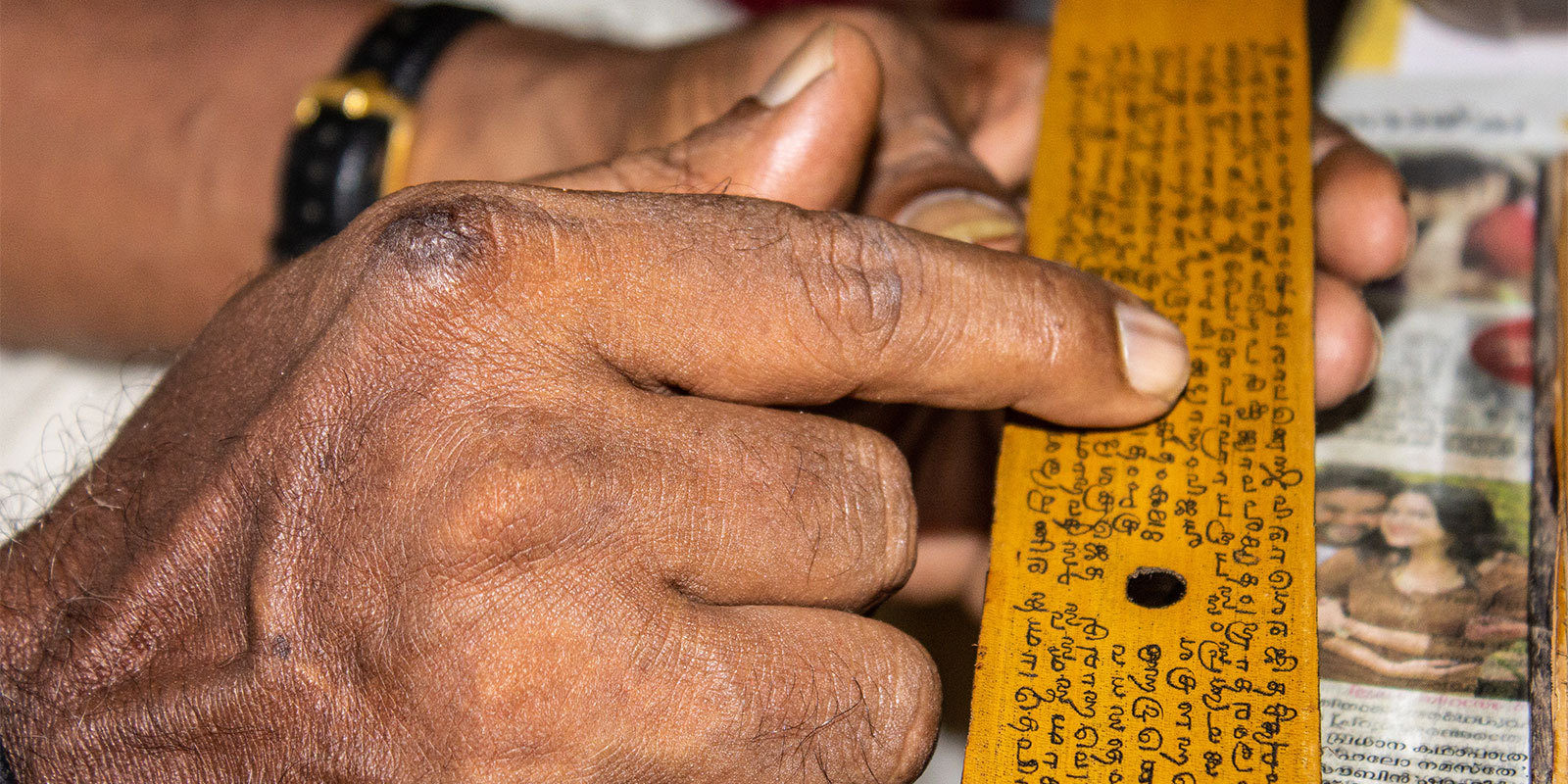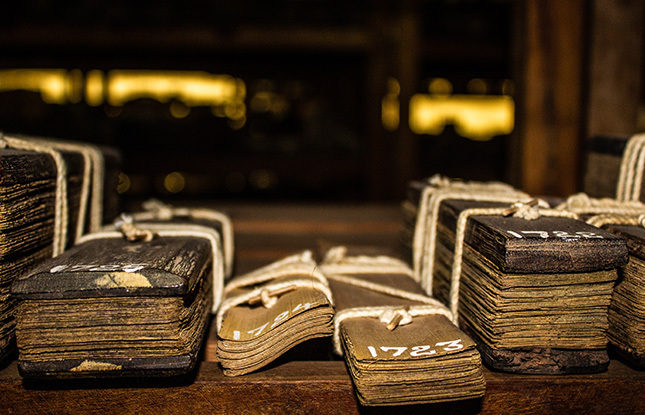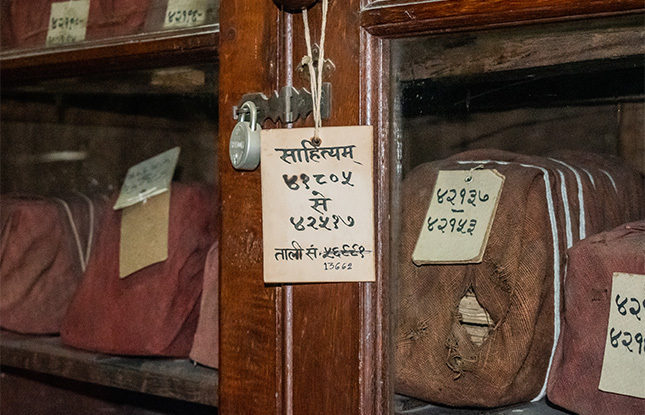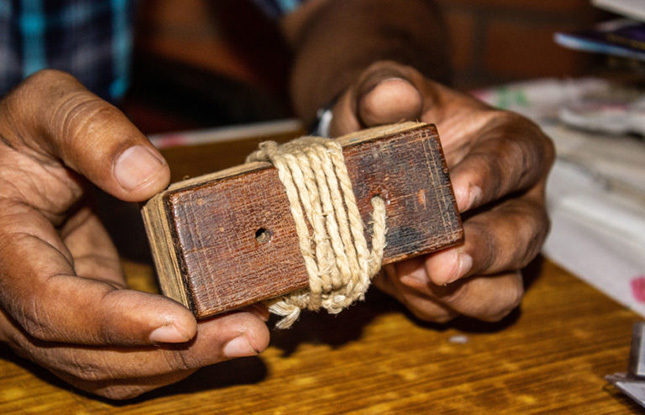Anthony Cerulli didn’t expect it would take nearly two decades.
Then again, he hadn’t expected a wrinkle in his research project. As a graduate student at the University of Chicago, Cerulli first traveled to India in 2003—specifically, to Kerala, a state in that country’s southern peninsula—to read and study ancient texts written in Sanskrit, one of civilization’s oldest languages.
But as he sat with local experts poring over them in a village physician’s home, he noticed something interesting happening nearby.
“This one family was running a clinic out of their house,” remembers Cerulli, a professor of South Asian studies. “Patients would arrive throughout the day and they would treat them, and they were using these 2,000-year-old Sanskrit texts as manuals for their practice. And I thought to myself, ‘You know, I'm excited about this literature, but it's even more exciting to see how they're still using the literature.’”
Cerulli quickly learned that the family was using the ancient texts to practice Ayurveda, a form of alternative medicine popular in countries like India and Nepal that incorporates herbal medicines, yoga and specialized diets, among other approaches.
In the United States, Ayurveda—a word that translates as “knowledge for long life”— became popularized during the New Age movement that began in the 1980s. Manufacturers of supplements and beauty products, such as Himalaya Products, categorized some shampoos, soaps and supplements as “Ayurvedic,” because they contained herbs used by ancient practitioners to balance the body’s systems. These products and practices occupy what’s commonly called the “alternative” health and beauty market, here in the U.S. In India, however, Ayurveda has evolved as a viable medical practice right alongside the model of traditional Western medicine.
Over the next seventeen years, Cerulli returned to India multiple times, studying this family of Ayurveda practitioners, befriending them and forming a friendship with the family’s oldest son, a young man about his age. They’re front and center in the book Cerulli is publishing next February, a history and ethnography of Ayurveda from the 19th century to present day.
Ayurveda is based on the concept of three central “doshas,” a Sanskrit word that means “fault or deficiency.” These include wind, bile and phlegm. Treatments, including changes in diet, massages, medicinal oils or herbal supplements, are designed to influence the balance between them.
“The interaction with the physician and a patient who comes to the house of the family I work with is very conversational,” says Cerulli. “And there's nothing actually exchanged other than information and ingredients— unless it's a really dire situation. They are empowering the patients to become their own physicians.”
Ayurveda’s trajectory in India is tied closely to British rule of the country beginning in the 19th century. The British quickly installed Western hospitals and medical schools to treat both British and Indian patients. But instead of simply ceding to Western medicine practices, Ayurveda practitioners found a way to evolve and remain relevant.
“Ayurvedic practitioners realized that people were looking at biomedicine as the only serious medicine,” explains Cerulli. “They decided that their best course moving forward into the 20th century was to show that Ayurveda is just as rigorous and as scientific.”
Ayurveda practitioners updated their Sanskrit texts to include biomedical categories, using terms like “biology” and “anatomy.” And they established a network of Ayurvedic colleges, certified by the government of India, to confer degrees on its graduates. As recently as four years ago, 4,000 students each year were graduating with a degree from an Ayurveda medical college.
Cerulli learned that the number of families practicing traditional Ayurveda was quite small, with the knowledge passed between generations. Many of the students that come to train with the family Cerulli studied have already earned a degree from an Ayurevda college and are also versed in Western medicine practices.
That initially puzzled him.
“Why would somebody who's got a medical license to go off and make a good living as an Ayurvedic doctor take a year or more to do this?” Cerulli asks. “It's almost always a sense that the profession that they've gotten into is based on the Ayurvedic literature this family uses, and they didn't feel they learned that literature wherever they went to college. For them to have a meaningful engagement with their profession, they wanted to understand that literature.”
Cerulli’s next project is to chart the arrival of Ayurveda in the United States, a story that involves the Beatles’ fascination with Transcendental Meditation, Indian music and yoga, the Hare Krishnas and the explosion of alternative medicine.
“In the United States, Ayurveda becomes more than just a bodily practice to fix a rash or a snake bite,” he says. “It becomes a mind-body and spiritual thing.”




